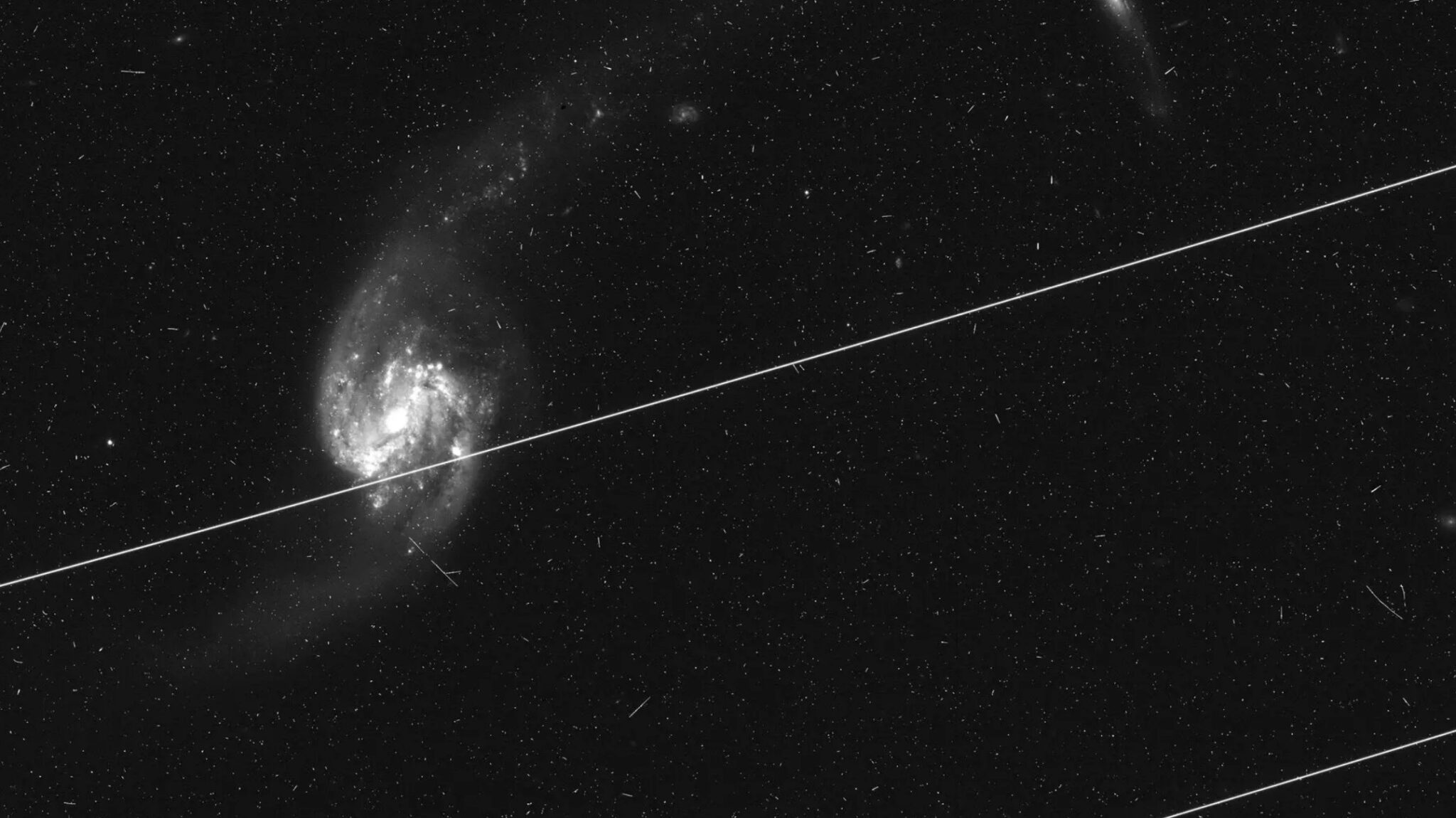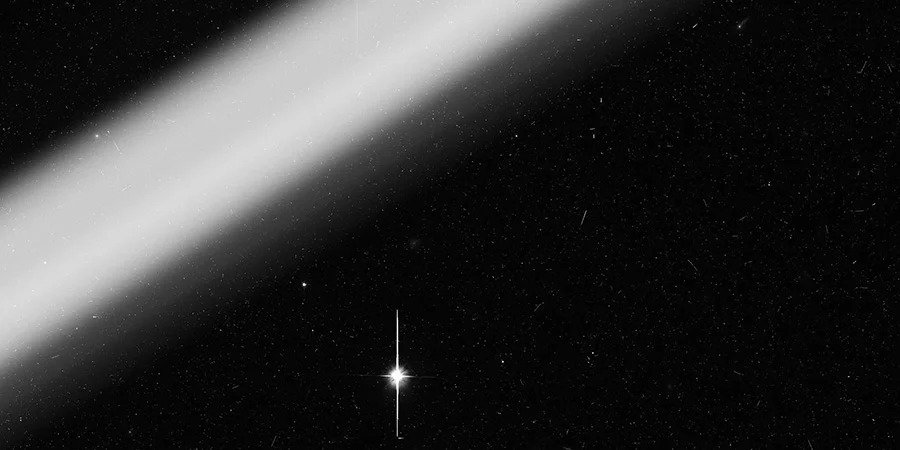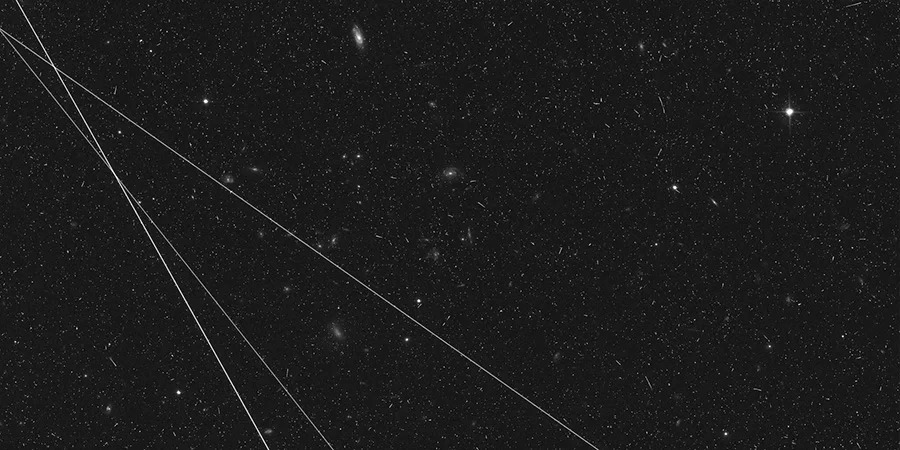The ever-growing number of SpaceX Starlink satellites is creating problems for ground-based astronomy. New research shows that space telescopes like Hubble have started to suffer from them too.

Satellites in low Earth orbit orbit the Earth every 90 minutes. Take into account the thousands of satellites currently operating in orbit, and you will be able to quickly assess the problem. The space fleet of Starlink and OneWeb satellites exacerbates the problem every year, clogging the field of view of telescopes by creating unpleasant stripes on astronomical images.
The situation is so serious that scientists have declared satellite constellations an existential threat to astronomy. A study published this week in the journal Nature Astronomy shows the extent of the impact of the growing swarm of satellites on the Hubble Space Telescope.
Deterioration of the situation
A study led by Sandor Kruk of the Max Planck Institute for Extraterrestrial Physics in Germany found that 3.7% of Hubble telescope images taken from 2009 to 2020 were corrupted by satellite bands. In 2021, this figure has grown to 5.9%. By that time, there were 1,562 Starlink satellites in orbit and 320 from OneWeb.

Scientists used an artificial intelligence algorithm to analyze more than 100,000 individual images as part of the Hubble Asteroid Hunter project. The algorithm was trained to detect images corrupted by satellite bands and ignore similar traces caused by natural phenomena such as asteroids, gravitational lenses and cosmic rays. The analysis stopped in 2021, but two years have passed since then, and the situation is much worse now.
Astronomers are trying to prevent the situation from getting worse. The international community has asked the United Nations for help in setting up an expert group on this issue.
Attempts to solve the problem for Hubble
At the same time, astronomers are not completely helpless, as they can apply various data and filtering techniques to identify and salvage ruined images. According to NASA, most of the images are still usable. However, the additional time for restoration and the cost of astronomical research will only increase.

Astronomers are also asking satellite operators to do something on their part. For example, reduce the display of their satellites. SpaceX has already experimented with some methods to mitigate the impact of Starlink on astronomy. For example, they used dark paint or visors to reduce the reflective properties of the surface. Unfortunately, these methods were not very effective.
Hubble is currently operating at an altitude of about 540 km above the surface, which is about 10 km lower than some of the tallest Starlink satellites. An effective solution may be a significant increase in the orbit of the space telescope, which has declined sharply for decades. NASA and SpaceX are now developing a plan to determine if such a thing is possible.
Earlier we reported that SpaceX launched the first batch of the next generation Starlink.
Follow us on Twitter to get the most interesting space news in time
https://twitter.com/ust_magazine

